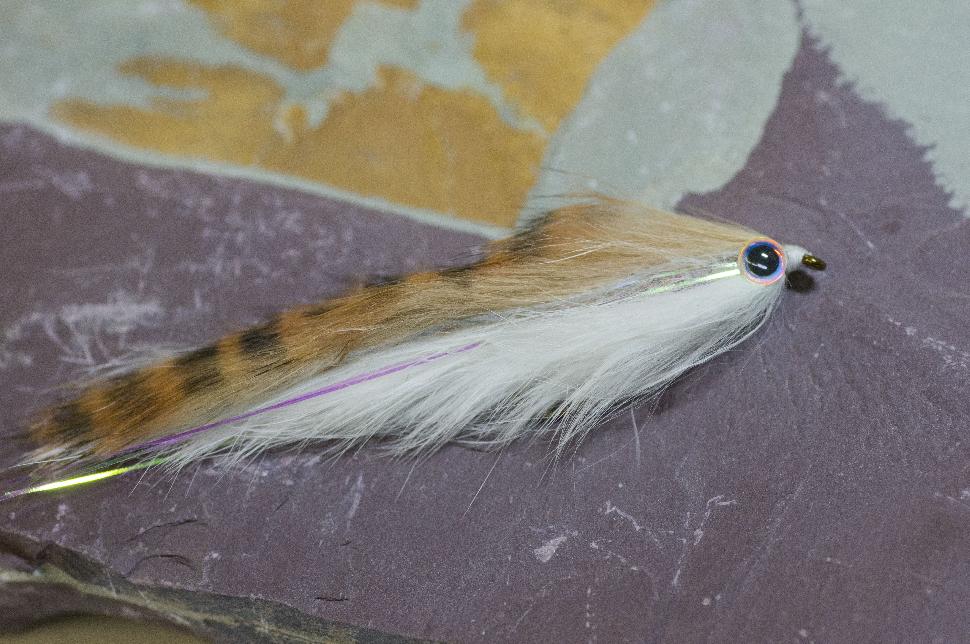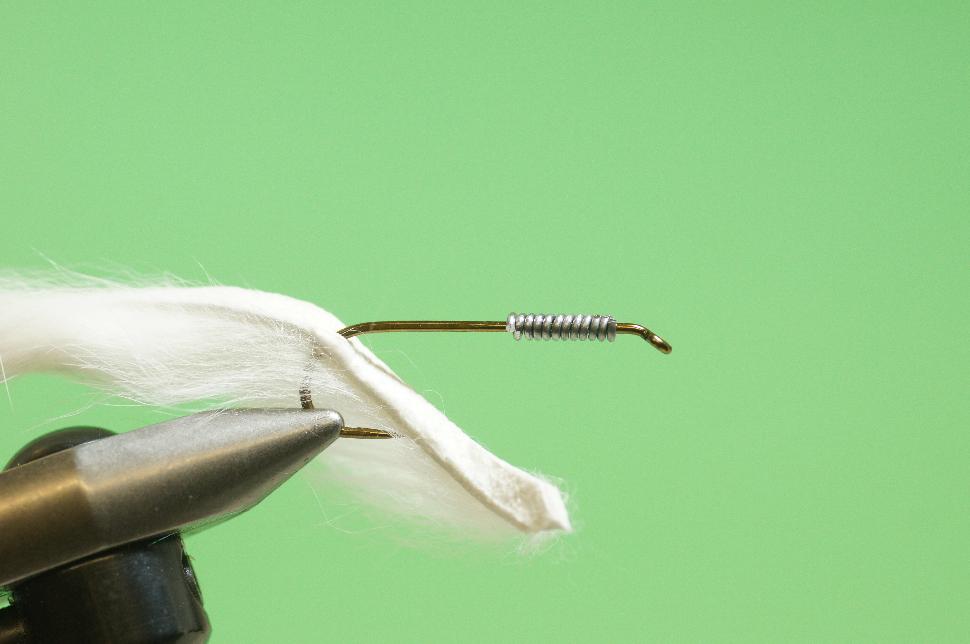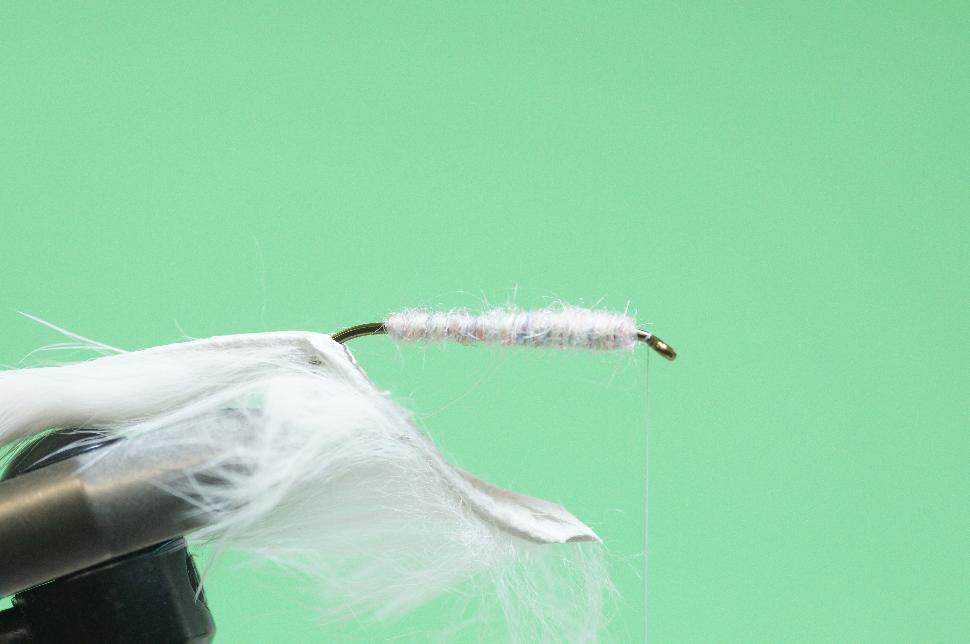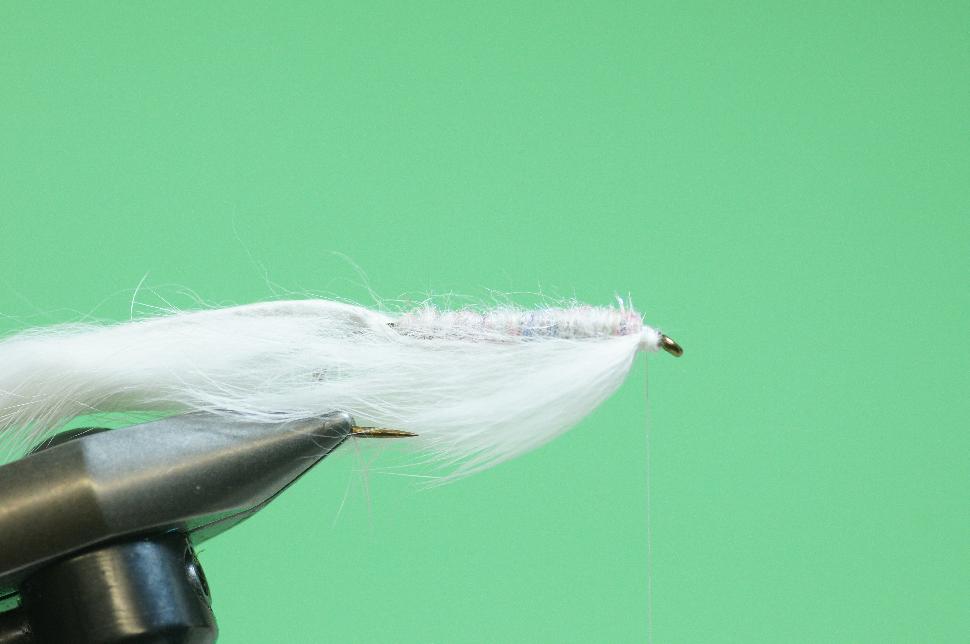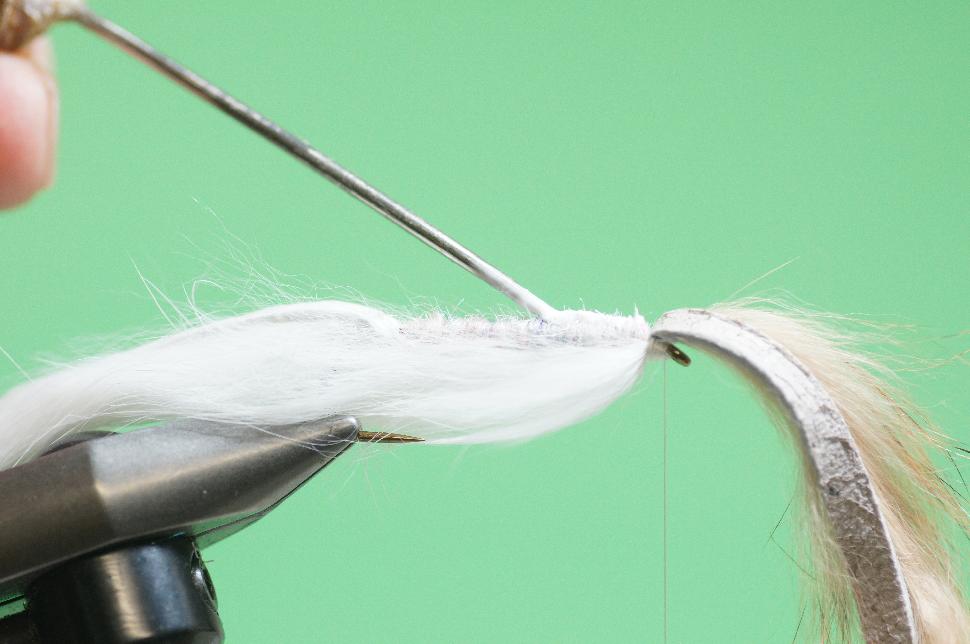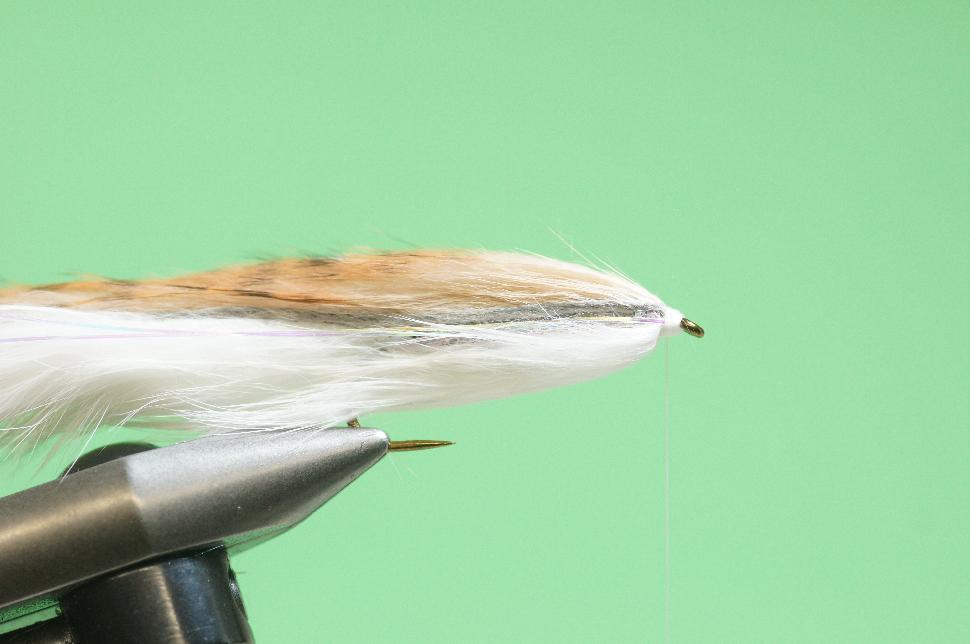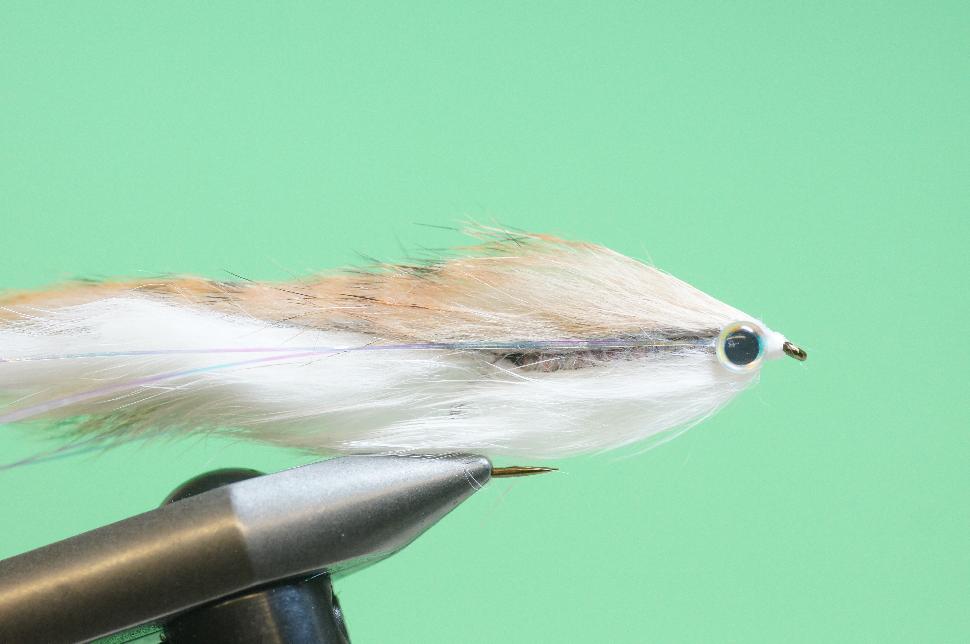Scott Sanchez’s Double Bunny is a simple, creative amalgamation of two rabbit strips cemented along a hook. Since its initial inception, Scott’s Double Bunny has caught well over 30 species, has spawned countless variations and is a three-time winner of the Jackson Hole One Fly Competition. If you like chasing predatory fish the Double Bunny is a fly box must.
Advertisement
Rabbit strips, either regular Zonker or wider magnum cut, are primary Double Bunny ingredients. Zonker cut strips are best suited for smaller Double Bunnies, size #4 or smaller. Wider magnum cut strips are ideal for larger Double Bunnies, size #2 or greater. The width of the magnum cut strips better envelops the hook shank, body and weight on larger flies. When using wide magnum strips, Scott recommends carefully trimming the tail of the Double Bunny to a point to improve the ‘swim-ability’ of the fly.
Most Double Bunnies are tied in natural combinations to mimic forage fish. A darker strip is used for the back, light coloured strips for the belly. Solid or non-traditional attractor ,colour schemes, designed to trigger an aggressive response or to have a Double Bunny stand out in certain water conditions, also work.
Advertisement
Once in place on the hook the rabbit strips are glued together and to the dubbed body using fabric adhesive. Fabric adhesive such as Bish’s Original Tear Mender (www.tearmender.com) provides a solid bond and once dry remains flexible, allowing the rabbit strips to breathe and move. Tear Mender can be found in outlets such as Canadian Tire in the camping section on a seasonal basis. The most consistent source for locating Tear Mender in Canada remains online or through individual fly shops that are aware of a Double Bunny’s charms. I have also used other fabric cements found in craft and sewing stores, so far they seem to hold up. Look for fabric adhesives that are waterproof and remain flexible once dry. Be sure to check expiry dates. Tear Mender for example, recommends that the product should be used within 12 months of purchase. Fabric adhesive also makes an excellent choice for gluing eyes onto a variety of natural furs, hair or dubbing, as is the case with the Double Bunny.
The Double Bunny is a simple tie. To begin, take the end of the strip where the grain of the fur flows back and trim it to a point to ease tie in and control head size. Stab the belly strip onto the hook shank. Factor in enough material so the belly strip can be pulled along the underside of the shank over the dubbed body and tied down at the hook eye. Once stabbed onto the shank the belly strip is moved out of the way to weight the shank and dub the body. I dub a body on all of my Double Bunny’s, regardless of strip width. The dubbed body provides an adhesive-friendly base for the rabbit strips. With the body weight and dubbed body in place cement the belly strip in place. Use a dubbing needle or toothpick to apply the adhesive to the underside of the dubbed body and the hide portion of the fur strip that touches the dubbed body. Prior to applying the adhesive, expose the hide by sweeping away the fur using moistened fingers. Once the belly strip is pulled under the dubbed body and tied off, a gentle squeeze ensures a good bond. Trim the portion of the hide trailing behind the hook to roughly shank length.
Advertisement
The back or dorsal strip is tied in by the trimmed point at the head of the fly so the natural grain of the fur flows backwards. Once tied in, pull the dorsal strip down over the fly and the tail section of the belly strip. Trim the dorsal strip so it is the same length as the belly strip. Fold the trimmed dorsal strip forward and apply adhesive to the dubbed body, the hide of the dorsal strip and the tail section of the belly strip. Pull the dorsal strip tight over the dubbed body and tail section of the belly strip. Pinch the dorsal strip tight against the dubbed body and the tail section of the belly strip to ensure a firm bond. All that is left to do to complete the Double Bunny is to add some lateral flash down both sides and attach the eyes.
-
Via Phil Rowley Trim the end, were the fur flows back, of a white Zonker strip to a point. Stab the belly strip onto the hook point ensuring the trimmed end of the strip can be tied down at the hook eye. Be sure to factor in the width of the body and the weight so there is enough rabbit strip forward of the stab through point to tie down at the hook eye. With the belly strip stabbed onto the hook into the vise weight the front portion of the hook shank using lead or lead free wire.
-
Via Phil Rowley Attach the tying thread just in front of the body weight. Cover the hook shank and lead wire with tying thread. Dub a slender even body along the length of the shank and covering the lead underbody. The dubbed body should finish about an eye width back from the hook eye.
-
Via Phil Rowley Apply a thin coating of fabric adhesive to the underside of the body. Pull the rabbit strip forward so the natural grain of the fur flows back under the body and tie off at the hook eye. Gently squeeze the rabbit strip against the dubbed body for a few seconds to ensure a firm bond. Moistening and pulling the fur down on the rabbit strip avoids accidentally gluing any fur to the dubbed body. Trim the trailing portion of the rabbit strip behind the hook to roughly shank length.
-
Via Phil Rowley As with the belly strip, trim the end, were the grain of the fur flows back, of the Sculpin colored UV2 Jailhouse Zonker strip to a point. Tie in the prepared back strip at the hook eye by the point. Stroke the back strip over the body. Trim the back strip the same length as the belly strip. Fold the back strip forward out in front of the hook eye, hide side up, to expose the dubbed body. Using a dubbing needle or toothpick coat the dubbed body, the hide of the back strip and the hide of the trailing tail section of the belly strip with fabric adhesive.
-
Via Phil Rowley Pull the back strip down over the body and the adhesive coated tail section of the belly strip. Pinch and squeeze the back strip onto the dubbed body and coated tail section of the belly strip to ensure a firm bond. As with the belly strip moistening the fur and sweeping it away from the hide reduces the risk of accidently gluing any fur to the dubbed body. Double a single strand of Flashabou around the tying thread. Slide the doubled Flashabou along the thread and into position along the near side of the hook down along the dubbed body. Secure the Flashabou in place back from the hook eye to the rear of the head area. Once in place the Flashabou should trail along the side, parallel to the hook shank. Trim the ends of the Flashabou even with the ends of the rabbit fur tail. Repeat this process on the far side of the hook. Build a neat head, whip finish and remove the tying thread.
-
Via Phil Rowley Moisten and stoke the Flashabou strands on the near side of the fly so they flow directly back along the hook shank down the seam of the two rabbit strips. Using a toothpick or dubbing needle place a small drop of fabric adhesive onto the fly and the Flashabou strands just behind the thread head. Place a moulded eye onto the drop of fabric adhesive. With the eye in position, gently pinch and hold the eye for a few seconds to ensure a firm bond. Repeat this process to attach the far side eye. Rotating the fly to a horizontal position in the vise helps the eye attachment process. Give the eyes a final pinch to confirm their location and then set the fly aside to dry.
